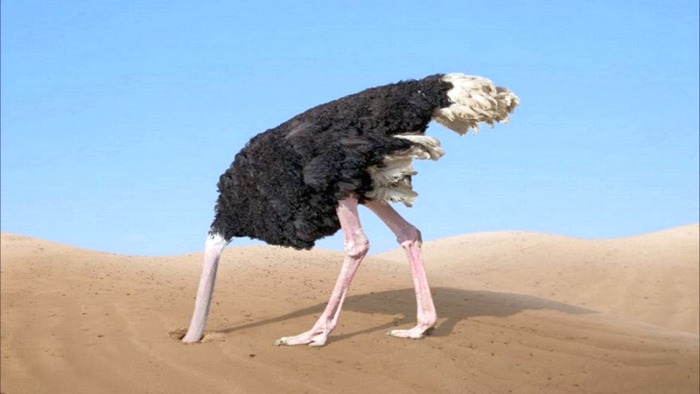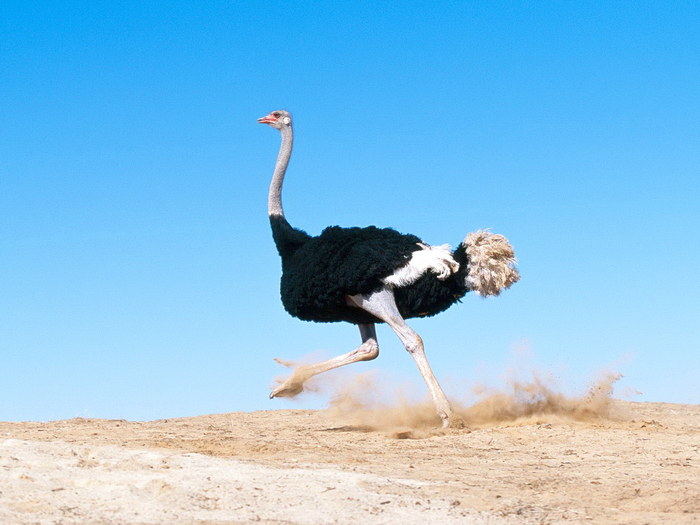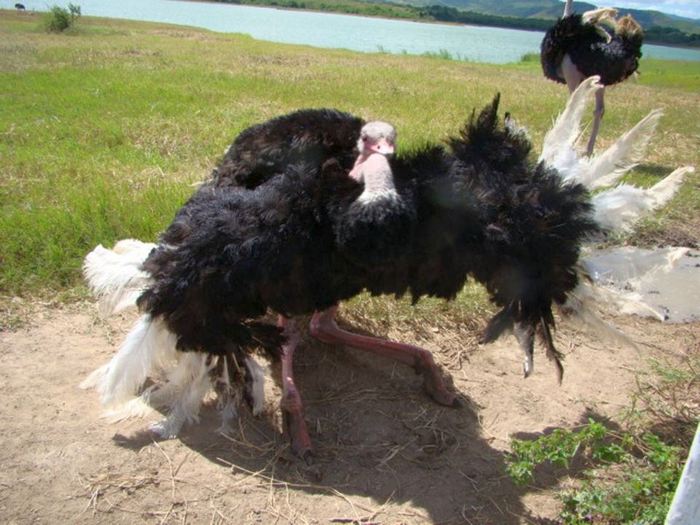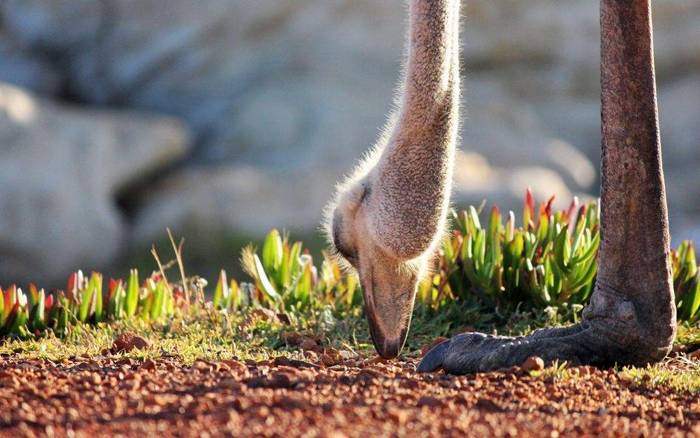Content:
Hiding your head in the sand is a stable expression that indicates that someone has chickened out, hid from problems. This expression implies a comparison with an ostrich, which does just that in case of danger. But is the largest bird in the world hiding in such a strange way and, if so, does it help in a dangerous situation?
The inhabitants are sure that this is exactly what happens. The ostrich's head is small, therefore, he is completely stupid and considers such a way to escape from problems reliable. Such an image is fixed to the animal and is displayed not only in phraseological units, but also in cartoons, movies, anecdotes. However, the truth is that an ostrich never buries its head in the sand. This is one of the many folk myths that have not been scientifically confirmed.
There are films in which, according to the script, the ostrich should be filmed standing in the famous pose. To get the animal to play this role, I had to dig a hole and fill it with goodies. While the ostrich was feasting on a treat, the cameramen took the necessary shots.
Where exactly this statement takes its roots, it is impossible to say unequivocally. But even in ancient times, people saw an ostrich with a bowed head and made their own conclusions. An ancient Roman scientist wrote in his writings: "Ostriches believe that when they stick their head and neck in the ground, their whole body seems to be hidden from the outside." Travelers from the Old World often brought tales of overseas animals. Probably, this is how the tale of giant birds, which, in danger, thrust their heads into the ground, also came to Europe. For some reason, this myth has spread so far across Europe that there is still an expression like “stick your head in the sand” in all European languages.
There are several versions explaining why a large bird should bury its head in the ground. It turns out an interesting chain when one myth gives birth to another.
Myth: an ostrich hides its head in the sand for fear.
The most famous version is that an ostrich hides in the sand from danger. A little logic is enough to refute it. If, at the sight of a predator, the bird hid in this way, it would be eaten and did not give offspring. In nature, only those traits are genetically transmitted due to which the species survives. If ostriches tried to survive by playing hide and seek like this, they would have become extinct long ago.
In fact, ostriches are natural runners, capable of speeds up to 70 km / h. The long legs of a two-meter bird take steps 3.5-4 meters. The pursuers have practically no chance of catching a healthy bird, especially since, thanks to its wings, the ostrich sharply changes its direction of movement. Even a one month old chick runs away at a speed of 50 km / h.
However, the hide-and-seek version has a right to life. Running away is not always rational, because it is a very energy-consuming activity. If the danger is far away, the ostrich simply falls to the ground and presses its neck to it. It is very difficult to notice it in the thickets. This is exactly what the female sitting on the nest does. Moreover, the females have a masking color in gray tones. It is not necessary to stick your head up to your neck in the ground.
There are times when the bird gape, and the predator managed to sneak up close. If you run late, or the ostrich is driven into a dead end, combat skills are used.The lower limbs of a two-hundred-kilogram animal strike with a force of about 30 kg / cm2. Such a blow may well be fatal even for an adult lion. Based on the above facts, we can conclude that ostriches have a whole arsenal of survival skills. Therefore, they will not hide so absurdly and ineffectively.
Myth: an ostrich hides its head because it wants to sleep.
Do ostriches hide their heads in the sand to sleep? A very interesting, but somehow implausible version. Of course, there are animals that sleep while standing, such as horses or herons. And then, they are rather half-asleep, not allowing themselves to be completely disconnected. Ostriches, on the other hand, even prefer to doze while sitting, legs tucked under them, and their head is in an upright position. They don't even hide it under their wings, as most birds do. At this moment, the bird hears everything perfectly, it has excellent hearing. But in order to fall asleep deeply, she has to lie down, stretching her neck and legs. This is the most dangerous time for an ostrich. But since they never live alone, while one sleeps, the others are watching. Then the relatives change places. In this way, the safety of the flock is maintained.
Myth: an ostrich buries its head in the sand in search of food.
This version seems to be the most logical. Indeed, there may be insects and larvae underground, which the ostrich is trying to find. But the question remains: how does he breathe in the sand? The answer is simple - no way. Ostriches feed on what grows, runs and crawls on the savannah. These are mainly plant foods: grass, plant fruits, flowers and seeds. If possible, the animal will not give up insects, small lizards and rodents. Chicks and juveniles eat only animal food. An adult male needs about 3.5 kg of food per day, so he almost always eats, that is, he stands with his head tilted to the ground.
Some birds have one feature - they need to swallow sand to digest food. This feature is also inherent in ostriches. They often swallow small pebbles, sand, and in general everything that comes under their feet. Perhaps, this is where the version went that ostriches are looking for food in the ground. They actually drive the sand itself, and they don't need to stick their head into it at all.
It is impossible to answer the question why the ostrich hides its head in the sand. Not a single scientist has yet recorded such a fact. Most likely, the inhabitants saw a male who dug a hole for a nest, and concluded that he was hiding like that.
Currently, ostriches are bred on many farms, including in Russia. An adult male can hold a person on his back, so they ride on ostriches. In many countries of the world, ostrich racing is a popular form of entertainment.
















